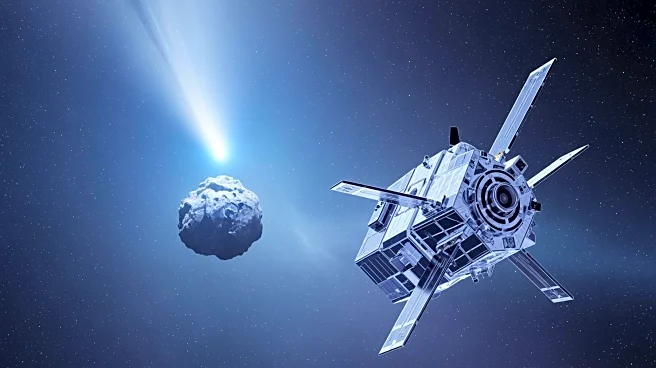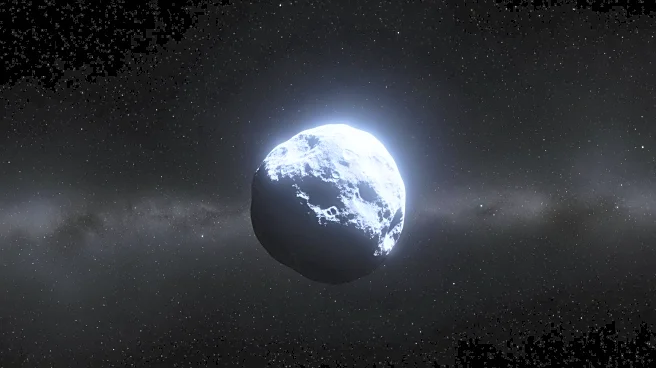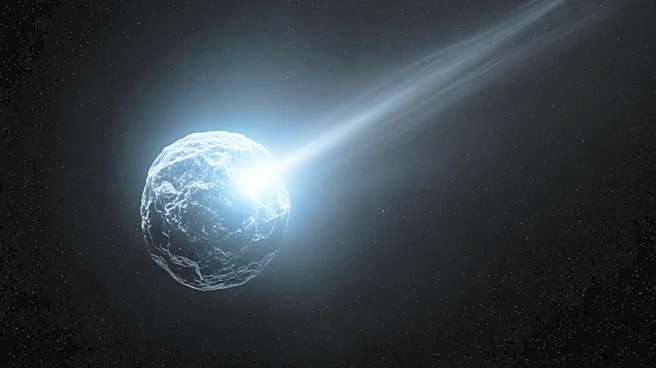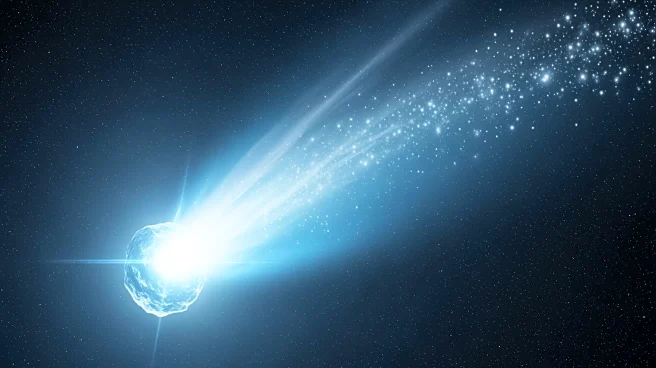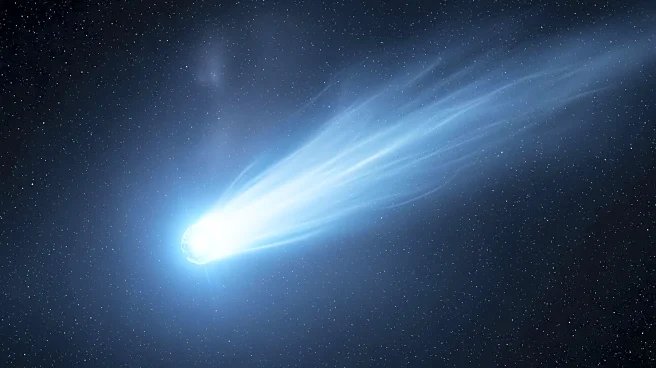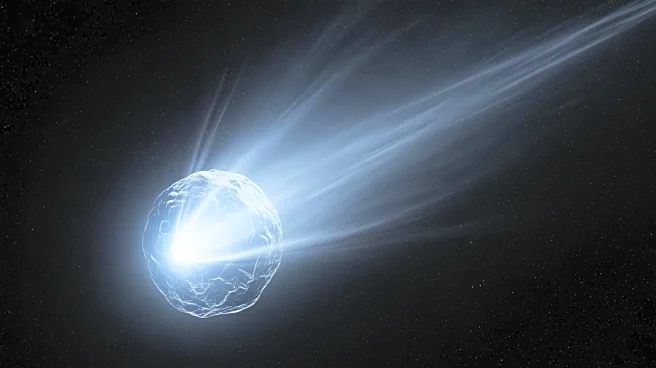What's Happening?
NASA's MAVEN spacecraft has provided new data on the interstellar comet 3I/ATLAS, revealing details about its hydrogen composition and deuterium-to-hydrogen ratio. This information helps scientists understand
the comet's origins in another star system. The comet, discovered by the ATLAS survey, is the third confirmed interstellar object, following 1I/ʻOumuamua and 2I/Borisov. Recent observations have debunked rumors of the comet breaking apart, which were confused with another comet, C/2025 K1 (ATLAS). Harvard astrophysicist Avi Loeb has suggested that the comet's trajectory near Jupiter could indicate it is an alien mothership, although NASA maintains it is a natural comet.
Why It's Important?
The study of 3I/ATLAS offers a rare opportunity to gather data from an interstellar object, potentially providing insights into the formation of planetary systems beyond our own. The comet's behavior and composition could challenge existing models of cometary physics and chemistry. The debate over its nature, whether natural or artificial, highlights the intersection of scientific inquiry and public interest, driven by speculation and media coverage. Understanding such objects can enhance our knowledge of the universe and improve our ability to detect and analyze future interstellar visitors.
What's Next?
3I/ATLAS is expected to pass close to Earth in mid-December 2025, allowing for further observations by both professional and amateur astronomers. NASA plans additional studies using space telescopes like Hubble and James Webb. In March 2026, the comet will approach Jupiter, which may provide further opportunities to study its trajectory and behavior. The ongoing analysis will continue to refine our understanding of interstellar comets and their potential impact on planetary science.
Beyond the Headlines
The debate over 3I/ATLAS's nature reflects broader questions about the possibility of extraterrestrial technology and the limits of current scientific understanding. The comet's unusual characteristics challenge researchers to consider alternative explanations while adhering to rigorous scientific methods. This situation underscores the importance of open scientific discourse and the need for continued exploration and observation of celestial phenomena.
